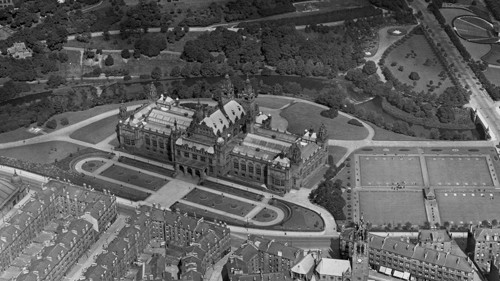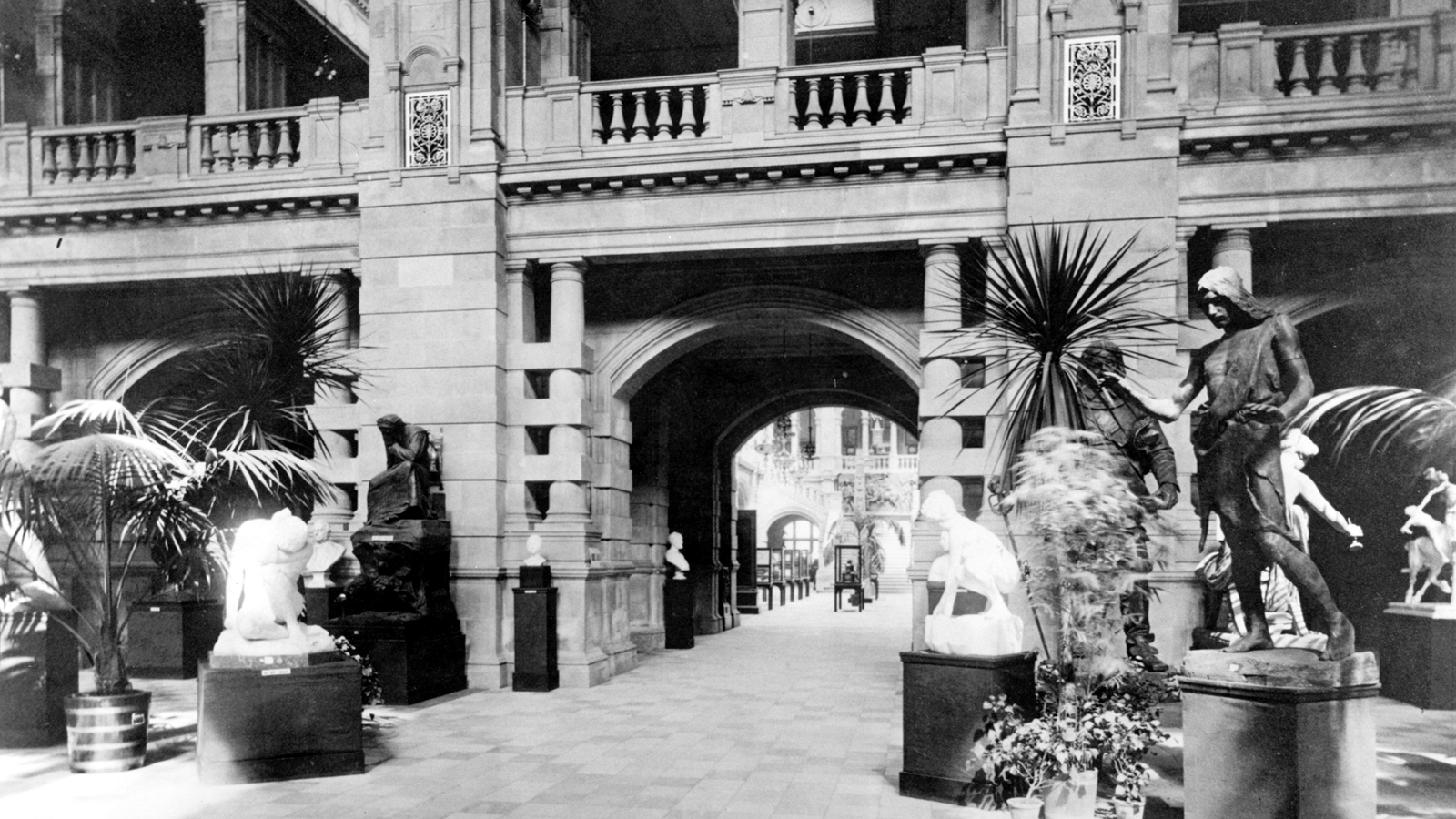Kelvingrove Museum - Times Past

In partnership with the Glasgow Times, our archivists are exploring Glasgow's fascinating history. This week, Nerys Tunnicliffe writes about the Kelvingrove Museum.
The Kelvingrove Museum and Art Gallery is one of the most popular tourist attractions in Scotland today. It contains works by Salvador Dali, Van Gogh, Turner, Charles Rennie Mackintosh and many more, as well natural history collections and artefacts from Glasgow and around the world. It’s a favourite with locals and visitors alike.
The Corporation’s annual reports and committee minutes held at Glasgow City Archives carefully record visitor numbers, significant events and list new acquisitions to the collections, giving a wonderful insight to the vision behind the city’s museums and galleries.
The city’s first municipal museum was opened at Kelvingrove House by the Parks and Galleries Trust (later Glasgow Corporation Museums and Art Galleries) in 1872. Originally this mansion house was built for local merchant and Lord Provost of Glasgow, Patrick Colquhoun in 1783 by Robert Adam, and was sited a little to the east of the present-day art gallery and museum.
Although immediately popular, it was quickly realised the mansion was too small to accommodate the growing collections of artefacts and the large number of daily visitors. It was enlarged in 1876, and later still the Camphill Gallery and Museum, McLellan Galleries and The People’s Palace were acquired by the Corporation. Even so, the idea for a more sizable single building to showcase the city’s collections continued to be raised. The array of artworks, ethological and historical objects owned by the city were very much seen as a proud reflection of Glasgow’s vast international trade and industrial heritage worthy of being displayed in a purpose-built gallery.
The massively successful 1888 International Exhibition of Industry, Science and Art was based in a temporary building on the grounds of the Kelvingrove House. With over 5 million visitors the exhibition achieved its aims of enhancing Glasgow’s prestige and raising funds for a larger municipal museum building. Plans for an even bigger exhibition, the 1901 Glasgow International Exhibition, were viewed as the perfect opportunity to erect a new building. Somewhat controversially however this would mean demolishing the old mansion.
On the first page of the Glasgow Corporation’s Museums and Art Galleries annual report of 1899, it was reported how the decision to ‘reluctantly’ demolish the old Kelvingrove House was taken as the ‘exigencies of the coming 1901 International Exhibition demanded that sacrifice ….’. There was vocal opposition to the demolition with organisations such as the Glasgow Art Club petitioning against it, and it took two attempts for the demolition to be fully agreed to by Glasgow Corporation. It’s interesting now to reflect that the appeal of today’s well-loved gallery was not at first universal, and what would have happened to the old Kelvingrove House mansion if another site had been proposed.
Today’s building designed by J W Simpson and E J Milner Allen was opened to display the 1901 exhibition’s fine art section, then opened more formally in 1902 to house the varied collections it’s still known for, and which continue to attract visitors worldwide.

